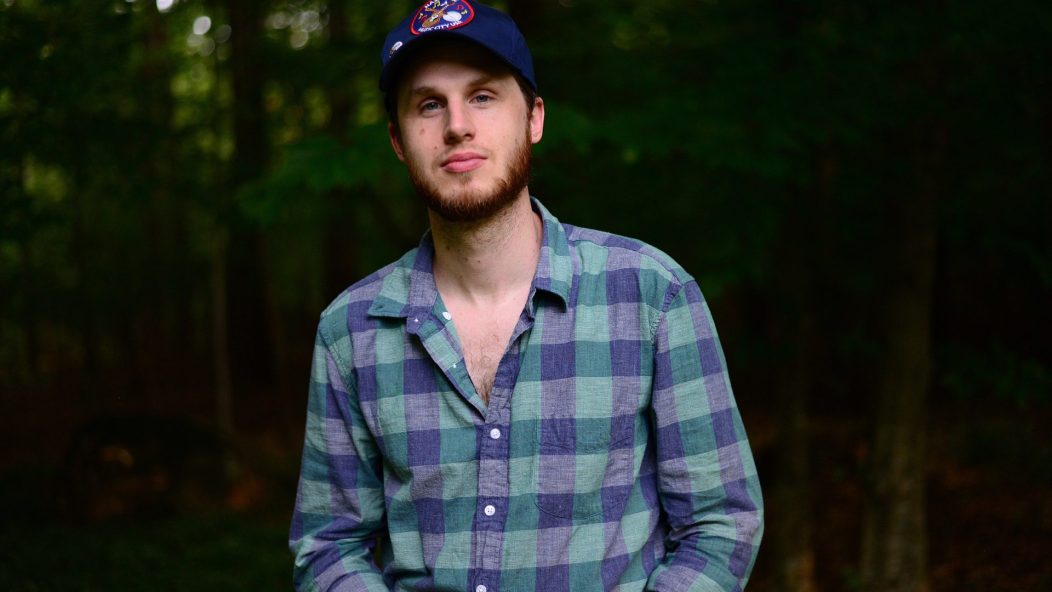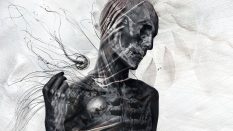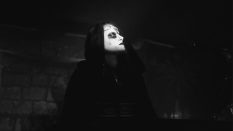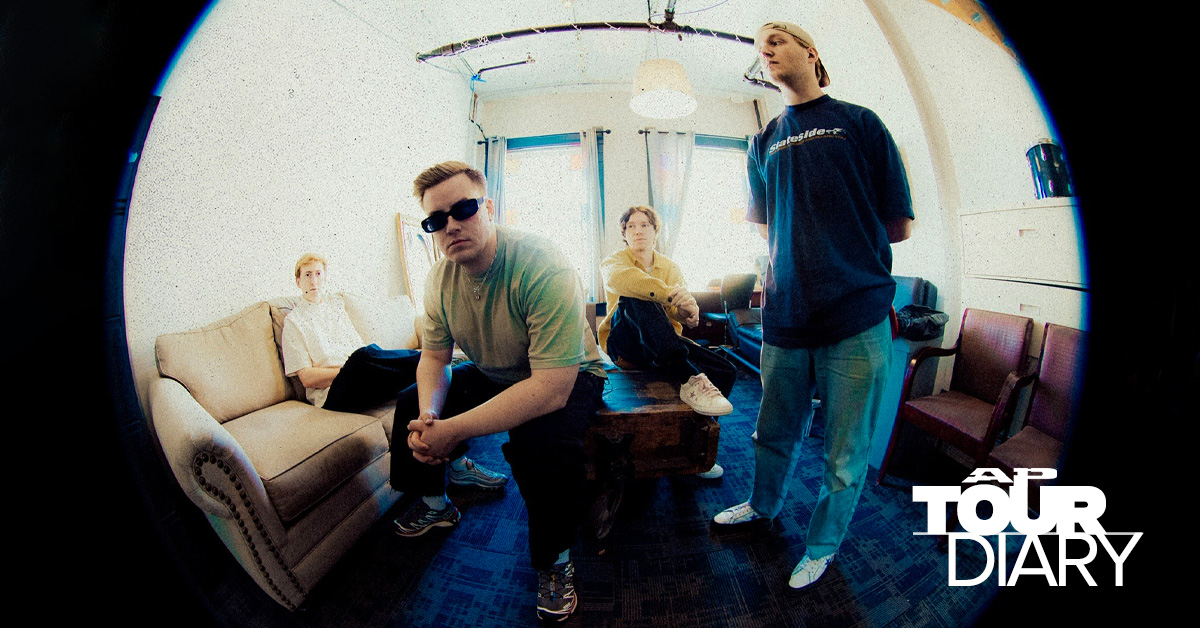
Interview & Song Premiere: Horseback

…
Jenks Miller’s ever-unpredictable Horseback returns August 12 with Dead Ringers from Relapse. Expect more genre-twisting experimentation, hypnotic rhythms, and hallucinatory soundscapes but with an additional focus on electronic elements. The album also sees Miller continue his exploration of the western mythical tradition and states of consciousness. And yes that title is a nod to the Cronenberg movie. Miller was gracious enough to answer some questions via email, speaking on the connection between the cover art and sound of Dead Ringers, the album’s electronic influences, how his various musical projects fit together, and more. Read the interview and stream “Modern Pull,” the opening song from Dead Ringers, below.
…
…
You’ve said that you collaborate with cover artists to help shape the conceptual drive of an album. How does Aleksandra Waliszewska’s art relate to the narrative of Dead Ringers?
Among other things, Dead Ringers is about the high cost of dualistic thinking. And it’s about the sacrifice required of the human animal to achieve a more grounded, holistic perspective. Aleksandra’s artwork operates on a of primal level, I hope highlighting, by contrast, the more synthetic sounds on the album. As I see it through the lens of my reading within the western mystical tradition, her death goddess cuts through ubiquitous techno-babble, parting the veil to reveal the unity of the “one thing.”
…
![12 Jacket (Gatefold - Two Pocket) [GD30OB2-N]](https://www.invisibleoranges.com/files/2016/08/deadringers_3000.jpg?w=630&h=420&zc=1&s=0&a=t&q=89)
…
The song “In Another Time, In and Out of Form” from Dead Ringers features musicians you’ve worked with before on Half Blood and Piedmont Apocrypha. When you collaborate with other players, how concrete are your directions and how much is developed through group improvisation?
Improvisation is an important part of my writing process. As far as Horseback is concerned, by the time I’m working with other musicians, the parts are more or less in place; The challenge is to make them gel as a live ensemble, and that requires practice. There’s always room for suggestions or inflections from collaborators, but I try to work as efficiently as possible with this material because I know the process of overdubbing and editing after cutting the basic tracks will take a very, very long time.
One of the reasons I created Rose Cross NC was so that I’d have a direct outlet for improvisation both on recordings and in live performance. Horseback’s records are very detailed: even when they feel raw and/or minimally executed, a lot of work goes into crafting and editing each part to make the music as tight as it wants to be. I need that kind of obsessive attention to detail, but I also love sprawling, loose improvisation — and as I get older, I find that I enjoy improvising in a live setting more than I like reproducing exactly what’s on a given record.
What role do electronics play with regards to the sound and narrative of Dead Ringers? Are they any particular electronic musicians you draw inspiration from?
Electronics play a central role in the sound and narrative of Dead Ringers. Early “computer music,” krautrock, concrete/noise and dub have had a big influence on this project since day one. More recently, I’ve developed a taste for for minimal electronic dub and house styles. While early electro/acoustic artists–Laurie Spiegel or Terry Riley, for example — have a more direct bearing on my approach, I’ve also been able to learn a lot from artists like The Field and Rhythm &Sound/Moritz Von Oswald Trio. I’m also inspired by artists at the intersection of out jazz, electronic music and modern classical: Late-era Sun Ra, Evan Parker’s ElectroAcoustic Ensemble, Pharoah Sanders and Don Cherry would be good examples, though the electronic elements of their sounds aren’t usually the first things to jump out at you.
Mount Moriah, your country project, released its third album earlier this year. Has playing in that group had any effect on your writing and playing for Horseback?
From the beginning, Mount Moriah has engaged directly with the canon of classic rock and country music — the “pop music” of my childhood. That kind of classic songcraft is challenging and rewarding in its own way, but it has also made me want to push further out with my other musical projects. Or maybe it has simply fulfilled whatever need I have to play music that other people like, so that I don’t feel any external constraints in Horseback or Rose Cross NC.
You’ve said that you try to work on music every day — in a sense it’s a ritual. I’m curious if you see any connection between this and the ritualistic themes/moods of the music?
Yeah, for sure. The ritualized production process for this music is really its primary guiding force. It’s hard to articulate exactly what the connection is, because music production is highly technical while a personal practice can be very abstract. I’d have to write a book about which parts of the production process seem to have spiritual significance. Long story short, I like music that sends me into a trance. That trance is useful in the way my brain works — and doesn’t work. Playing trance music feels very natural for this reason, so it’s what I end up doing most often when I sit down to play.
I understand that your home studio is a mostly digital setup. Can you talk about the use of digital vs. analog in recording?
I can’t imagine recording with tape these days, mostly because it’s so expensive to make records that way. These days you’d probably spend most of your record budget on tape alone. Digital recording is more efficient both in terms of its economic advantages and the time you save in editing. I do like analog synths and outboard gear, but again these instruments are usually prohibitively expensive. Maybe some day.
You’ve mixed all Horseback’s albums and from what I understand you tend to mix using headphones. What effect might this have on Horseback’s sound?
Well, mixing with headphones is a limitation, for sure. It changes the way you’re able to perceive the width and depth of the stereo field, which has a direct effect on the way you mix. As more people listen to their music on headphones, this becomes less of a problem. But ideally you want your records to sound good in actual physical space.
Mixing in headphone can also take longer, because you have to compensate for the sonic characteristics of the headphones you’re using. Any bass bump or hi cut in the headphones is going to translate as its inverse on a neutral system. But, again, it’s simply a matter of money. It’s expensive to build a room that sounds good enough to mix in, or to buy time in a studio for mixing sessions. So my workaround for that was to learn how a specific set of headphones’ sonic characteristics translate to different stereos and computer systems. It’s an imperfect solution, though, and still leaves you grasping in darkness for good sound. There’s a lot of trial-and-error involved, a lot of time on the back end of the production process.
You’ve cited Jung, Joseph Campbell, and Jodorowsky, among others, as influences on the lyrics of previous albums. What were some of your inspirations for the lyrics this time around?
All the same sources, really. They’ve been consistent across all the Horseback records. Studies in western mysticism have also been important in developing a symbolic language for the music. Without this symbolic language I struggle to talk about the themes.
What is the meaning, or meanings, of the title Dead Ringers?
For the purposes of this record, Dead Ringers are the estranged, twin husks of the soul that can only provide meaning and insight when brought together. The individual and his or her shadow. A shallow duality that keeps us small and afraid of what we refuse to understand.
I also like the idea of ringing bell sounds as a queue, either to enter or come out of a trance, or to wake up. There’s something profound in tintinnabulation. In the liner notes for Fratres, Arvo Pärt says, and I’ll quote at length here: “Tintinnabulation is an area I sometimes wander into when I am searching for answers – in my life, my music, my work. In my dark hours, I have the certain feeling that everything outside this one thing has no meaning. The complex and many-faceted only confuses me, and I must search for unity. What is it, this one thing, and how do I find my way to it? Traces of this perfect thing appear in many guises – and everything that is unimportant falls away.”
The title itself is borrowed from a Cronenberg film about twin gynecologists. It’s a creepy film. It felt appropriate.
Horseback is known for its nebulous approach to genre. Within the metal community, doom has been cited as a possible reference point for Horseback in terms of the use of repetition, tone and tempo. Is this a conscious influence and how do these techniques relate to the meditative nature of the music?
Black Sabbath was one of my favorites as a kid, and they’ve been the most enduring of all my early musical obsessions. I can’t escape their influence (and I wouldn’t want to anyway). Do they count as doom? I guess that’s another discussion. At any rate, Black Sabbath’s blues riffs have a circular quality that I like. Of course, you can find the same quality in a lot of blues music, from Son House to Junior Kimbrough. If you repeat circular motifs like that enough, providing just enough variation to hold the attention, you’re able to do strange things with time. I guess a lot of doom does this, but my favorite black and death metal does it, too.
…
Dead Ringers is out August 12 via Relapse Records. Follow Horseback on Twitter.
…








![Bad Omens announce new album CONCRETE JUNGLE [THE OST]](https://www.altpress.com/wp-content/uploads/2024/04/17/BadOmens-CROP_2024_JW_0619_Final_V1.jpg)


